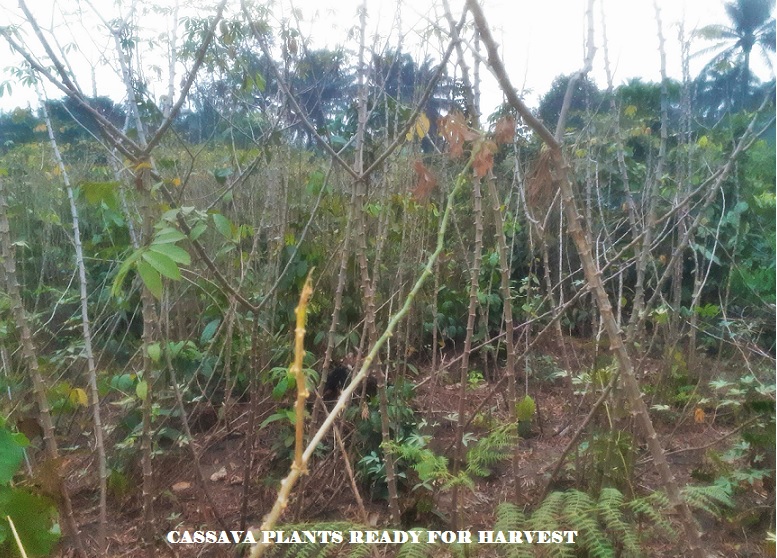Cassava, known botanically as MONIHOT ESCULENTA, is a starchy root vegetable. Cassava is a stable food in many tropical regions around the world. There are some important steps to consider in order to ensure a successful plantation / harvest of cassava. Here are the guidelines on how to plant cassava
THE FIRST GUIDLINE ON HOW TO PLANT CASSAVA IS SELECTING THE RIGHT PLANTING MATERIAL:
Cassava is typically propagated through stem cutting rather seeds. When choosing planting material, it is important to select healthy, diseases-free stems from a reliable source. Source for stems that are at least 10-12 inches long and have a diameter of 1-15 inches.
LAND PREPARATION:
Cassava is best produce in a well-drained, sandy loam soils with pH between 5.5 and 6.5. Before planning, the land should be ploughed, harrowed, and cleared of weeds and debris. It is also beneficial to incorporate organic matter such as compost or manure into the soil to improve fertility.
PLANTING:
Cassava is typically planted at the beginning of the rainy season. This is because it requires consistent moisture for best growth. In areas with distinct wet and dry seasons, planting should be timed to ensure that the crop have enough time to establish before the dry season. Plant the stem cuttings in furrows, ridges or mounds, spacing them 1m x 1M meters apart. The cutting should be planted horizontally at a depth of 5-8 centimetres, with at least 4-5 nodes buried in the soil.
You can study Agricultural Science in the following Universities in Nigeria;

MULCHING AND WEEDING:
Applying a layer of mulch around the base of the cassava plants can help to retain soil moisture and suppress weed growth. Weeding is a very important guideline on how to plant cassava. Regular weeding is also important to prevent competition for nutrients and water. Weed manually at 2-3 weeks after planting and subsequently as weed appear. Or apply chemical like prim extra at 5ml/ha immediately after planting.
FERTILIZER APPLICATION:
Cassava is a relatively low –input crop, but it can benefit from the application of fertilizer. Especially in soil with low fertility. A balance NPK (nitrogen, phosphorous, and potassium) 12.12.17x2mgO at 400-500kg/ha can be applied at 4-6 weeks after planting/sprouting.
PEST AND DISEASES MANAGEMENT:
Cassava is susceptible to a number of pests and diseases. These includes cassava mosaic diseases, cassava brown streak diseases, and mealybug infestation. Using disease-resistant varieties like risk TMS 30572, practicing good field sanitation and planting early can help to minimize the risk of these problems. Burn diseased plant residue.
HARVESTING:
Harvesting is the last stage on how to plant cassava. Cassava is typically ready for harvest 6-15 months after planting. This depends on the variety and growing conditions. Harvesting is usually done by uprooting the entire plant and carefully removing the roots from the soil. The harvested roots should be stores in a cool, dry place to prevent deterioration. Healthy harvested stems can then be recycled.
CONCLUSION
In conclusion, planting cassava requires careful attention to land preparation, selection of planting materials, timing of planting, and ongoing management of pests and diseases. With proper care, cassava can be valuable additions to small holder farms and provide a reliable source of food and income for farmers around the world. Apart from cassava being directly use for the production of food, it can be used for the production of flour. Then the flour could be used for production of bread and other baked snacks. The white liquid from cassava can is use for the production of starch for clothe making and other chemicals.
Drop comment below for more update on how to plant cassava

1 thought on “HOW TO PLANT CASSAVA – CASSAVA PRODUCTION”